#Kathleen Clarke
Text
#OTD in 1914 – Cumann na mBan, Irish women’s Republican movement, was founded.
Ní saoirse go saoirse na mban.
Over 100 women gathered in Dublin to discuss the role of women in the lead-up to revolution. The meeting, at Wynn’s Hotel, was presided over by Agnes O’Farrelly.
The first provisional committee of Cumann na mBan included Agnes MacNeill, Nancy O’Rahilly, Mary Colum, Jenny Wyse Power, Louise Gavan Duffy and Elizabeth Bloxham.
They adopted a constitution which stated…

View On WordPress
#1916 Easter Rising#Agnes MacNeill#Agnes O’Farrelly#Constance Markievicz#Cumann na mBan#Dublin#Elizabeth Bloxham#History#History of Ireland#Inghinidhe na nÉireann#IRA#Ireland#Irish Citizen#Irish Civil War#Irish War of Independence#Jenny Wyse-Power#Kathleen Clarke#Louise Gavant Duffy#Mary Colum#Mary MacSwiney#Muriel MacSwiney#Nancy O’Rahilly#Nora Connolly#Wynn&039;s Hotel
13 notes
·
View notes
Text
In 2008, Supreme Court Justice Clarence Thomas decided to send his teenage grandnephew to Hidden Lake Academy, a private boarding school in the foothills of northern Georgia. The boy, Mark Martin, was far from home. For the previous decade, he had lived with the Justice and his wife in the suburbs of Washington, D.C. Thomas had taken legal custody of Martin when he was 6 years old and had recently told an interviewer he was “raising him as a son.”
Tuition at the boarding school ran more than $6,000 a month. But Thomas did not cover the bill. A bank statement for the school from July 2009, buried in unrelated court filings, shows the source of Martin’s tuition payment for that month: the company of billionaire real estate magnate Harlan Crow.
The payments extended beyond that month, according to Christopher Grimwood, a former administrator at the school. Crow paid Martin’s tuition the entire time he was a student there, which was about a year, Grimwood told ProPublica.
“Harlan picked up the tab,” said Grimwood, who got to know Crow and the Thomases and had access to school financial information through his work as an administrator.
Before and after his time at Hidden Lake, Martin attended a second boarding school, Randolph-Macon Academy in Virginia. “Harlan said he was paying for the tuition at Randolph-Macon Academy as well,” Grimwood said, recalling a conversation he had with Crow during a visit to the billionaire’s Adirondacks estate.
ProPublica interviewed Martin, his former classmates and former staff at both schools. The exact total Crow paid for Martin’s education over the years remains unclear. If he paid for all four years at the two schools, the price tag could have exceeded $150,000, according to public records of tuition rates at the schools.
Thomas did not report the tuition payments from Crow on his annual financial disclosures. Several years earlier, Thomas disclosed a gift of $5,000 for Martin’s education from another friend. It is not clear why he reported that payment but not Crow’s.
The tuition payments add to the picture of how the Republican megadonor has helped fund the lives of Thomas and his family.
“You can’t be having secret financial arrangements,” said Mark W. Bennett, a retired federal judge appointed by President Bill Clinton. Bennett said he was friendly with Thomas and declined to comment for the record about the specifics of Thomas’ actions. But he said that when he was on the bench, he wouldn’t let his lawyer friends buy him lunch.

Thomas did not respond to questions. In response to previous ProPublica reporting on gifts of luxury travel, he said that the Crows “are among our dearest friends” and that he understood he didn’t have to disclose the trips.
ProPublica sent Crow a detailed list of questions and his office responded with a statement that did not dispute the facts presented in this story.
“Harlan Crow has long been passionate about the importance of quality education and giving back to those less fortunate, especially at-risk youth,” the statement said. “It’s disappointing that those with partisan political interests would try to turn helping at-risk youth with tuition assistance into something nefarious or political.” The statement added that Crow and his wife have “supported many young Americans” at a “variety of schools, including his alma mater.” Crow went to Randolph-Macon Academy.
GET IN TOUCH
ProPublica plans to continue reporting on the Supreme Court. If you have information we should know, please get in touch. Josh Kaplan can be reached by email at [email protected] and by Signal or WhatsApp at 734-834-9383. Justin Elliott can be reached by email at [email protected] or by Signal or WhatsApp at 774-826-6240.
Crow did not address a question about how much he paid in total for Martin’s tuition. Asked if Thomas had requested the support for either school, Crow’s office responded, “No.”
Last month, ProPublica reported that Thomas accepted luxury travel from Crow virtually every year for decades, including international superyacht cruises and private jet flights around the world. Crow also paid money to Thomas and his relatives in an undisclosed real estate deal, ProPublica found. After he purchased the house where Thomas’ mother lives, Crow poured tens of thousands of dollars into improving the property. And roughly 15 years ago, Crow donated much of the budget of a political group founded by Thomas’ wife, which paid her a $120,000 salary.
“This is way outside the norm. This is way in excess of anything I’ve seen,” said Richard Painter, former chief White House ethics lawyer for President George W. Bush, referring to the cascade of gifts over the years.
Painter said that when he was at the White House, an official who’d taken what Thomas had would have been fired: “This amount of undisclosed gifts? You’d want to get them out of the government.”
A federal law passed after Watergate requires Justices and other officials to publicly report most gifts. Ethics law experts told ProPublica they believed Thomas was required by law to disclose the tuition payments because they appear to be a gift to him.
Justices also must report many gifts to their spouses and dependent children. The law’s definition of dependent child is narrow, however, and likely would not apply to Martin since Thomas was his legal guardian, not his parent. The best case for not disclosing Crow’s tuition payments would be to argue the gifts were to Martin, not Thomas, experts said.
But that argument was far-fetched, experts said, because minor children rarely pay their own tuition. Typically, the legal guardian is responsible for the child’s education.
“The most reasonable interpretation of the statute is that this was a gift to Thomas and thus had to be reported. It’s common sense,” said Kathleen Clark, an ethics law expert at Washington University in St. Louis. “It’s all to the financial benefit of Clarence Thomas.”
Martin, now in his 30s, told ProPublica he was not aware that Crow paid his tuition. But he defended Thomas and Crow, saying he believed there was no ulterior motive behind the real estate magnate’s largesse over the decades. “I think his intentions behind everything is just a friend and just a good person,” Martin said.
Crow has long been an influential figure in pro-business conservative politics. He has given millions to efforts to move the law and the judiciary to the right and serves on the boards of think tanks that publish scholarship advancing conservative legal theories.
Crow has denied trying to influence the Justice but has said he extended hospitality to him just as he has to other dear friends. From the start, their relationship has intertwined expensive gifts and conservative politics. In a recent interview with The Dallas Morning News, Crow recounted how he first met Thomas. In 1996, the Justice was scheduled to give a speech in Dallas for an anti-regulation think tank. Crow offered to fly him there on his private jet. “During that flight, we found out we were kind of simpatico,” the billionaire said.
The following year, the Thomases began to discuss taking custody of Martin. His father, Thomas’ nephew, had been imprisoned in connection with a drug case. Thomas has written that Martin’s situation held deep resonance for him because his own father was absent and his grandparents had taken him in “under very similar circumstances.”
Thomas had an adult son from a previous marriage, but he and wife, Ginni, didn’t have children of their own. They pitched Martin’s parents on taking the boy in.
“Thomas explained that the boy would have the best of everything — his own room, a private school education, lots of extracurricular activities,” journalists Kevin Merida and Michael Fletcher reported in their biography of Thomas.
Thomas gained legal custody of Martin and became his legal guardian around January 1998, according to court records.
Martin, who had been living in Georgia with his mother and siblings, moved to Virginia, where he lived with the Justice from the ages of 6 to 19, he said.
Living with the Thomases came with an unusual perk: lavish travel with Crow and his family. Martin told ProPublica that he and Thomas vacationed with the Crows “at least once a year” throughout his childhood.
That included visits to Camp Topridge, Crow’s private resort in the Adirondacks, and two cruises on Crow’s superyacht, Martin said. On a trip in the Caribbean, Martin recalled riding jet skis off the side of the billionaire’s yacht.
Roughly 20 years ago, Martin, Thomas and the Crows went on a cruise on the yacht in Russia and the Baltics, according to Martin and two other people familiar with the trip. The group toured St. Petersburg in a rented helicopter and visited the Yusupov Palace, the site of Rasputin’s murder, said one of the people. They were joined by Chris DeMuth, then the president of the conservative think tank the American Enterprise Institute. (Thomas’ trips with Crow to the Baltics and the Caribbean have not previously been reported.)
Thomas reconfigured his life to balance the demands of raising a child with serving on the high court. He began going to the Supreme Court before 6 a.m. so he could leave in time to pick Martin up after class and help him with his homework. By 2001, the justice had moved Martin to private school out of frustration with the Fairfax County public school system’s lax schedule, The American Lawyer magazine reported.
For high school, Thomas sent Martin to Randolph-Macon Academy, a military boarding school 75 miles west of Washington, D.C., where he was in the class of 2010. The school, which sits on a 135-acre campus in the Shenandoah Valley, charged between $25,000 to $30,000 a year. Martin played football and basketball, and the Justice sometimes visited for games.
Randolph-Macon was also Crow’s alma mater. Thomas and Crow visited the campus in April 2007 for the dedication of an imposing bronze sculpture of the Air Force Honor Guard, according to the school magazine. Crow donated the piece to Randolph-Macon, where it is a short walk from Crow Hall, a classroom building named after the Dallas billionaire’s family.
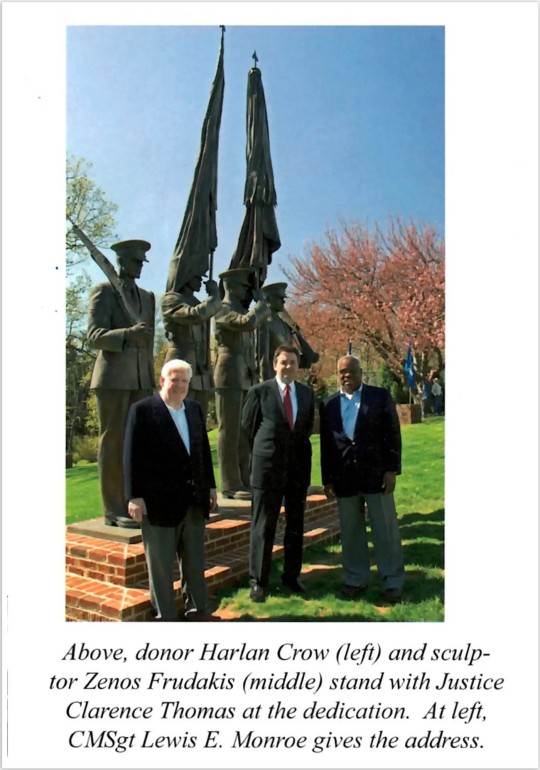
Martin sometimes chafed at the strictures of military school, according to people at Randolph-Macon at the time, and he spent his junior year at Hidden Lake Academy, a therapeutic boarding school in Georgia. Hidden Lake boasted one teacher for every 10 students and activities ranging from horseback riding to canoeing. Those services came at an added cost. At the time, a year of tuition was roughly $73,000, plus fees.
The July 2009 bank statement from Hidden Lake was filed in a bankruptcy case for the school, which later went under. The document shows that Crow Holdings LLC wired $6,200 to the school that month, the exact cost of the month’s tuition. The wire is marked “Mark Martin” in the ledger.
Crow’s office said in its statement that Crow’s funding of students’ tuition has “always been paid solely from personal funds, sometimes held at and paid through the family business.”
Grimwood, the administrator at Hidden Lake, told ProPublica that Crow wired the school money once a month to pay Martin’s tuition fees. Grimwood had multiple roles on the campus, including overseeing an affiliated wilderness program. He said he was speaking about the payments because he felt the public should know about outside financial support for Supreme Court Justices. Martin returned to Randolph-Macon his senior year.
Thomas has long been one of the less wealthy members of the Supreme Court. Still, when Martin was in high school, he and Ginni Thomas had income that put them comfortably in the top echelon of Americans.
In 2006 for example, the Thomases brought in more than $500,000 in income. The following year, they made more than $850,000 from Clarence Thomas’ salary from the Court, Ginni Thomas’ pay from the Heritage Foundation and book payments for the Justice’s memoir.
It appears that at some point in Martin’s childhood, Thomas was paying for private school himself. Martin told ProPublica that Thomas sold his Corvette — “his most prized car” — to pay for a year of tuition, although he didn’t remember when that occurred.
In 2002, a friend of Thomas’ from the RV community who owned a Florida pest control company, Earl Dixon, offered Thomas $5,000 to help defray the costs of Martin’s education. Thomas’ disclosure of that earlier gift, several experts said, could be viewed as evidence that the Justice himself understood he was required to report tuition aid from friends.
“At first, Thomas was worried about the propriety of the donation,” Thomas biographers Merida and Fletcher recounted. “He agreed to accept it if the contribution was deposited directly into a special trust for Mark.” In his annual filing, Thomas reported the money as an “education gift to Mark Martin.”

Do you have any tips on the Supreme Court or the judiciary? Josh Kaplan can be reached by email at [email protected] and by Signal or WhatsApp at 734-834-9383. Justin Elliott can be reached by email at [email protected] or by Signal or WhatsApp at 774-826-6240.
#us politics#news#ProPublica#2023#us supreme court#ethics rules#ethics violations#supreme court ethics violations#scotus#justice clarence thomas#ginni thomas#harlan crow#Mark Martin#Christopher Grimwood#Randolph-Macon Academy#Hidden Lake Academy#Mark W. Bennett#Richard Painter#Kathleen Clark#The Dallas Morning News#Kevin Merida#Michael Fletcher#Camp Topridge#Adirondacks#superyacht#russia#Chris DeMuth#The American Lawyer#Crow Holdings LLC#heritage foundation
23 notes
·
View notes
Text
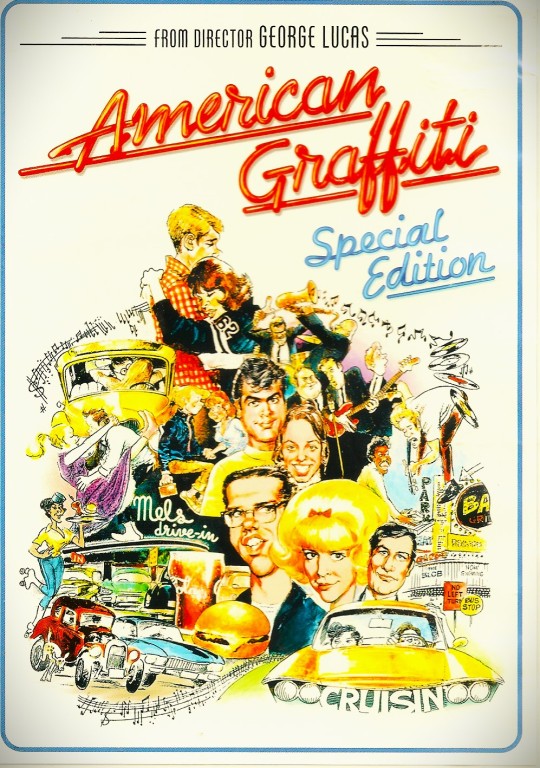
Bad movie I have American Graffiti 1973
#American Graffiti#Richard Dreyfuss#Ron Howard#Paul Le Mat#Charles Martin Smith#Cindy Williams#Candy Clark#Mackenzie Phillips#Wolfman Jack#Bo Hopkins#Manuel Padilla Jr.#Beau Gentry#Harrison Ford#Jim Bohan#Jana Bellan#Deby Celiz#Lynne Marie Stewart#Terence McGovern#Kathleen Quinlan#Ty Crowley#Scott Beach#John Brent#Gordon Analla#John Bracci#Jody Carlson#Del Close#Chuck Dorsett#Stephen Knox#Joe Miksak#Suzanne Somers
4 notes
·
View notes
Text

Look what came in the mail today :)
#e. lockhart#kathleen glasgow#bunny#booklr#reading#wonyoungism#mona awad#boy parts#eliza clark#twisted hate#ana huang#stuydblr#aesthetic#books & libraries
13 notes
·
View notes
Text






Exams are finally over! Bring on graduation!
#storytelling#year 3#the beginning#rbu#reginald barber university#sophie clarke#bonnie parker#sadie hill#vivian rose#lynda floral#claude rousseau#genji sato#amy parker#max green#richard ward#kathleen rose
4 notes
·
View notes
Text
New Releases: October 25, 2022
New Releases: October 25, 2022
Anne by Kathleen Gros
In this modern graphic novel retelling of Anne of Green Gables from graphic novelist Kathleen Gros, foster kid Anne Shirley finally lands in a loving home and befriends a girl who she may have more-than-friends feelings for.
Anne Shirley has been in foster care her whole life. So when the Cuthberts take her in, she hopes it’s for good. They seem to be hitting it off, but how…

View On WordPress
#Anne#Ghost Town#Girlfriend Material#H.A. Clarke#Heretic#Into the Riverlands#Jeanna Kadlec#Kathleen Gros#Katia Rose#Kevin Chen#Nghi Vo#Olivie Blake#The Atlas Paradox#The Scratch Daughters
50 notes
·
View notes
Text
RWBY Spanish dub
Protagonists: Beacon Academy staff
Professor Ozpin
EN: Shannon McCormick
LA: Mario Arvizu
Glynda Goodwitch
EN: Kathleen Zuelch (Volumes 1-3)/Tiana Camacho (Volumes 10-)
LA: Maru Guzmán
Peter Port
EN: Ryan Haywood (Volumes 1-4)/Anthony Sardinha (Volumes 10-)
LA: Francisco Colmenero (Volumes 1-4)/Mario Filio (Volumes 10-)
Bartolomew Oobleck
EN: Joel Heyman (Volumes 1-4)/Cam Clarke (Volumes 10-)
LA: Beto Castillo
Dafnis Fernández and Gerardo Reyero were previous choices for the role of Port.
Ricardo Tejedo was the previous choice for the role of Oobleck.
#rwby#rwby spanish dub#beacon academy staff#professor ozpin#shannon mccormick#mario arvizu#glynda goodwitch#kathleen zuelch#tiana camacho#maru guzmán#peter port#ryan haywood#anthony sardinha#francisco colmenero#mario filio#bartholomew oobleck#joel heyman#cam clarke#beto castillo
2 notes
·
View notes
Text





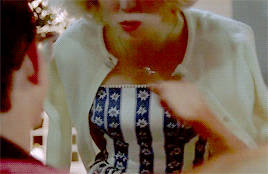


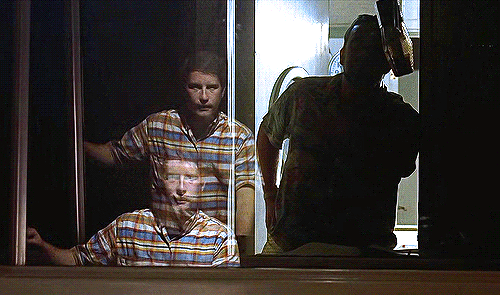

American Graffiti, directed by George Lucas. He made this in 1973, before Star Wars.
Maybe the best movie about white suburban middle class teens then — who were a couple years older than the first boomers. Way before my time, but I feel like I lived it. Some really funny stuff!
#where were you in ’62?#george lucas#ron howard#harrison ford#cindy williams#richard dreyfuss#paul le mat#candy clark#mackenzie phillips#kathleen quinlan#deuce coupe#bo hopkins#suzanne somers#american graffiti
14 notes
·
View notes
Photo

from The White House China series (2016-ongoing).
Kathleen Clark's series reimagines actual dinner plates at the presidential residence in Washington, DC, to reflect America's violent history of imperialism, war, and slavery. Each plate is dedicated to the crimes of a different American president, from George Washington to George W. Bush.
11 notes
·
View notes
Text
#OTD in 1970 – Death of Irish Nationalist, Sorcha MacMahon, in Dublin.
It was said of Sorcha by her contemporaries that there was no ‘woman of that period whose efficiency, selflessness and enthusiasm was greater’.
Born Sarah Teresa MacMahon at Coas, Co Monaghan. Born in 1888, she was called after her mother; as well as using her given name, she also used the Irish form, Sorcha.
Her family spoke Irish as their first language. She was educated in Laggan National…

View On WordPress
#1916 Easter Rising#Anglo-Irish Treaty#Co. Monaghan#Coas#Cumann na mBan#Dublin#GPO#Irish War of Independence#Jeremiah O&039;Dononvan Rossa#Kathleen Clarke#Michael Collins#Sarah Teresa MacMahon#Sorcha MacMahon
9 notes
·
View notes
Text
Baby Geniuses (1999)

While I didn't enjoy this film, that doesn't mean you won't. No matter what I say, the people involved in this project did it: they actually made a movie. That's something to be applauded. With that established...
I've said many times that there are no bad premises, only bad executions. Baby Geniuses has taken that thought behind the shed and blasted it with a double-barrelled shotgun. This is one of the worst films I’ve ever seen.
To prove that her method of education is the best, Dr. Elena Kinder (Kathleen Turner) and her associate, Dr. Heep (Christopher Lloyd) separate twins Sylvester and Whit (played by Leo, Gerry & Myles Fitzgerald and voiced by Miko Hughes) at birth. One twin is raised in a laboratory and the other by a kind couple (Kim Cattrall as Robin and Peter MacNicol as her husband Dan). What the scientists at BabyCo don’t realize is that babies are naturally capable of speaking in a language only they understand - until they grow out of it once they learn to converse with adults. When the brothers meet and are accidentally switched, the other babies under the scientists' care make it their mission to return them to their rightful homes.
This film’s story sounds even stupider as I’m trying to summarize it. None of it makes any sense, whatsoever. If babies are intelligent, why do they poop in their diapers? Why do they get fooled by simple peek-a-boo games? How is it they can’t figure out a way to communicate with the rest of us? Oh, because adults are too stupid to realize that the random notes they smash onto a keyboard actually translates into a beautiful symphony and that their random scribbles on a page are identical to ancient languages? Please.
It doesn’t get any easier to swallow when we see a baby jump up in the air and perform karate kicks or use tools to escape from secure locations. Their skulls haven’t even solidified and yet they’re able to incapacitate full-grown men, and not just random men, but armed guards? Movie. I don’t mind if YOU’RE an idiot, but don’t assume I’m an idiot.
Moving past that load of diaper gravy and we find this catastrophe that is a plot. It’s so brainless and idiotic that at first, you can have fun at its expense. The unconvincing CGI used to create a baby in a three-piece suit dancing to Puttin’ on the Ritz had me in stitches. Then, the film kept going and going and going. It grinds away your sanity and will to survive until you’re begging for it to end. You think you’ve seen lousy performances before. This picture takes it to a level of hell so deep it was deemed unfit for Satan himself. First, we have child actors on-screen. Not only are they children, but they’re babies so they have no idea what is happening around them. They’re basically looking off-screen at jingling toys with this stupid expression on their face. Then, they’re dubbed over by voice actors who are devoid of talent. We're talking dual-levels of awful. They’re almost enough to make you overlook the adults, who must have had nothing but regrets once they got on set because they bring no enthusiasm to their roles whatsoever.
There is no shortage of criticisms to be directed at Baby Geniuses. It features a terrifying animatronic baby (played by a man in a suit) who is sure to turn up again in your nightmares. The plot follows no logic. Writers Bob Clark (who also directs) and Greg Michael frequently run out of comedic ideas and instead start referencing other movies - even when it makes no sense. None of these criticisms accurately convey how agonizing it is to sit through Baby Geniuses. The picture relies heavily on you either finding any scene with a baby doing something it isn’t supposed to do hilarious or having an emotional meltdown at the sight of any diaper wearer. At no point is it more obvious than in the film’s overly manipulative conclusion, during which a montage of children is set to Gift of Love by Randy Travis. Thinking back to it makes me throw up a bit. And there’s a sequel to this? And it’s supposed to be EVEN worse? Diving into a crocodile pit is looking like a better option at this point. (On VHS, May 9, 2018)

#Baby Geniuses#movies#films#movie reviews#film reviews#Bob Clark#Greg Michael#Kathleen Turner#Christopher Lloyd#Kim Cattrall#Peter MacNicol#Ruby Dee#1999 movies#1999 films
3 notes
·
View notes
Photo

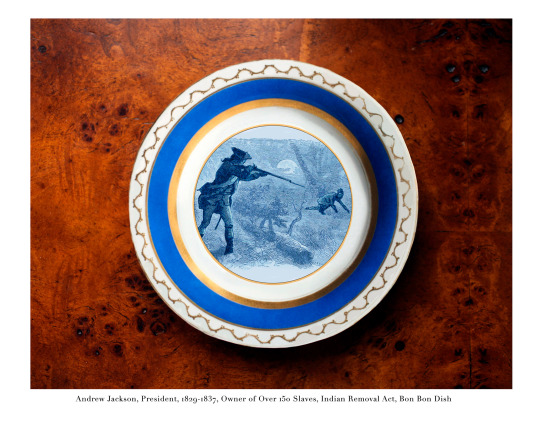


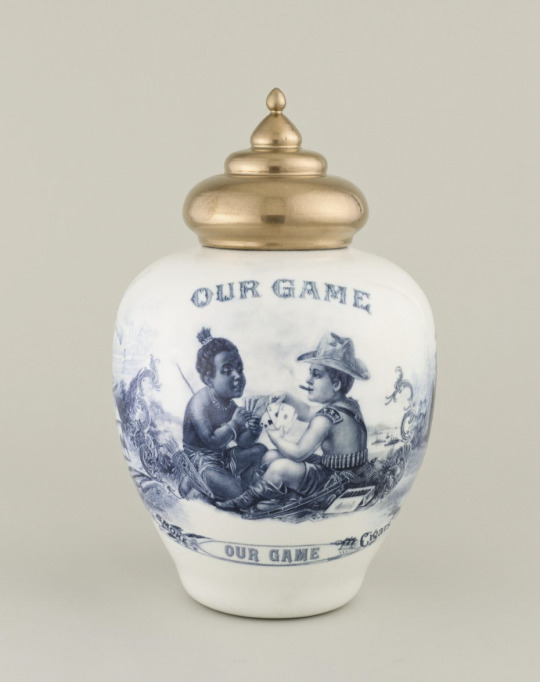

Images 1-4, White House China by Kathleen Clark
Images 5-6, Beatrice Glow
2 notes
·
View notes
Text
Rewatching 'Nikita': "Coup de Grace"
Hello, I'm back on the blog this wk and in this #rewatch episode of #Nikita, Alex helps Nikita protect Prince Erik from Division, who were hired to kill him.
The first time I watched Nikita, it’d already gone off the air. But I distinctly remember seeing the promos when I watched Smallville. So when I saw it in my Netflix recommendations, I knew I had to watch it. It’s been a while since then so I decided why not rewatch it? So now I’m binging the show from the beginning all over again. Last time, I watched the 12th episode so now I’m onto the 12th…

View On WordPress
#Aaron Stanford#Alex Udinov#Amanda Collins#Beatrice Rosen#Brendan Fehr#Chantal Quesnelle#Coup de Grace#Doru Bandol#Entertainment#Jaden#James Gilbert#Kathleen Munroe#Leela Kantaria#Lt. Reggie Johnson#Lyndsy Fonseca#Maggie Q#Malik#Melinda Clarke#Michael#Nikita#Nikita 1x13#Nikita Mears#Paolo Mancini#Percy Rose#Phillip Jarrett#Prince Erik#Princess Kristina#Review#Reviews#Rewatch
2 notes
·
View notes
Text
"OUR MUTUAL FRIEND" (1976) Review
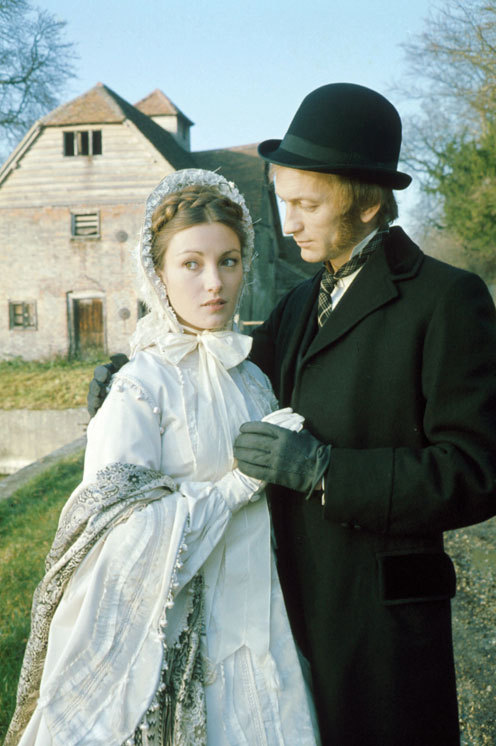
"OUR MUTUAL FRIEND" (1976) Review
I have a curious history with the 1998 adaptation of Charles Dickens' 1864-65 novel, "Our Mutual Friend". I had a lukewarm reaction to it when I first saw it. Following two re-watches of the miniseries, I became a major fan of it. So, when I discovered there had been an earlier adaptation of the novel, I did not hesitate to watch it. My efforts to view the 1976 miniseries, "OUR MUTUAL FRIEND" proved to be difficult, due more to availability reasons. But I finally managed to achieve it in the end.
Whether you are familiar with Dickens' tale or not, "OUR MUTUAL FRIEND" centered around the "death" of the heir to a fortune inherited from his father, a former collector from London's rubbish. The story begins with a solicitor named Mortimer Lightwood, who narrates the circumstances of the death of his client, a former dustman named Mr. Harmon, who collected London's rubbish, to his aunt and other guests at a society dinner. The terms of Old Harmon's will stipulated that his fortune should go to his estranged son John, who had returned to Britain after years spent abroad. John can inherit his father's fortune on the condition that he marry a woman he has never met, Miss Bella Wilfer. However, a Thames River waterman named Gaffar Hexam and his daughter Lizzie discover a corpse in the river with papers identifying the latter as John Harmon. When Mortimer learns of this death, he and his close friend Eugene Wrayburn head toward the river to identify the body. These events led to the following subplots:
*John Harmon fakes his death and assumes the identity of John Rokesmith, the Boffins' social secretary, in order to ascertain Bella Wilfer's character. John had recruited a sailor to impersonate him, but the latter betrayed him by drugging and later, robbing him. However, the sailor was later betrayed by others who not only robbed him, but also murdered him. The Hexams had discovered the sailor's body.
*Old Mr. Harmon's employees, Nicodemus and Henrietta Boffin inherit the Harmon fortune and take in Bella Wilfer as a ward to compensate for her loss, following John's "death".
*Gaffer Hexam's embittered former partner, Roger "Rogue" Riderhood falsely accused Hexam of murdering "Harmon".
*While accompanying his friend, Mortimer Lightwood, to identify Harmon's body, Eugene Wrayburn meets and falls in love with Hexam's daughter, Lizzie.
*Charley Hexam, Lizzie's younger brother, has a headmaster named Bradley Headstone, who becomes romantically and violently obsessed with Lizzie.
*Mr. Boffin hires a ballad-seller with a wooden leg named Silas Wegg to read for him. When he finds another will of Old Harmon's in the dust, he schemes with a taxidermist named Mr. Venus to blackmail his newly rich employer.
One of the reasons I had such difficulties in embracing the 1998 version of "OUR MUTUAL FRIEND" was the complex nature of the narrative. The story began with the death of the fake John Harmon and the latter's deception and spiraled out into different subplots. Years ago, I had made the mistake of assuming that most of these subplots had no connection whatsoever. Following my other viewings of the 1998 miniseries and this production, I now realize that the subplots had three major connections - money, class and John Harmon. Nearly every subplot had something to do with money, class or both. As for John Harmon . . . I found myself pondering on the fates of the main characters if John had not made that decision to recruit that sailor into his deception regarding his identity. Perhaps some of the subplots would have panned out - John and Bella's marriage (if he had agreed to the terms of his father's will), Charley Hexam's education, Lizzie Hexam's introduction to Bradley Headstone and her subsequent rejection of his marriage proposal. But there are some - Lizzie meeting Eugene Wrayburn, Eugene and Bradley's conflict, and Silas Wegg's attempt to blackmail Boffin - definitely would not have happened if John had not engaged in any deception on his part. Nearly the entire story seemed to be a case of "the Six Degrees of John Harmon".
One story arc from the novel seemed to be missing in this series - namely the attempt made by elite, yet impoverished newlyweds Alfred and Sophronia Lammle to befriend and scam a young heiress named Georgiana Podsnap. I can understand why the screenwriters had never included this arc into the miniseries, considering that the Lammles and Miss Podsnap had no connection to John Harmon, whatsoever. But apparently, the screenwriters had decided to delete them altogether, unlike screenwriter Sandy Welch, who had used the Lammles to go after Mr. Boffin in the 1998 adapation.
And how did "OUR MUTUAL FRIENDS" handled the narrative's multi-arcs? I thought director Peter Hammond, along with screenwriters Julia Jones and Donald Churchill managed to handle them quite well. Despite the various arcs being scattered to winds, all three managed to convey how they all connected in the end. My only complaint was how the director and the writers introduced the various arcs. I noticed that they mystery surrounding the discovery of John Harmon's body seemed to dominate the series' first episode, whereas the introductions of the Boffins and Bella Wilfer seemed to dominate the second. This seemed to give "OUR MUTUAL FRIEND"'s narrative a "paint-by-the-numbers" style in the miniseries' first third. From Episode Three and onward, Hammond, Jones and Churchill seemed to have no trouble juggling the various arcs within an episode.
But as much as I had enjoyed "OUR MUTUAL FRIEND", I have a few quibbles. Like a good number of BBC/ITV costume dramas between the 1950s and the 1980s, this production seemed to suffer from from the occasional slow pacing, due to Hammond shooting the miniseries more like a stage play. Granted, there were a few scenes that seemed avoid this fallacy, due to being filmed in an exterior setting - the Hexams' discovery of the fake John Harmon's body, Lizzie Hexam's discovery of the dying Betty Higden and Bradley Headstone's attack upon Eugene Wrayburn. But a good number of scenes - mainly those with interior settings and those that featured Silas Wegg and Mr. Venus' blackmail conspiracy - seemed to drag nearly forever, to the point that I found myself wondering if I was watching a televised stage play. I have one last complaint. The miniseries ended with the main characters briefly discussing Bradley Headstone's fate with a few words, not long after Eugene and Lizzie's marriage. As much as I had enjoyed this production, I found this ending rather abrupt and cold - quite disappointing, when I recall how the 1998 miniseries had ended.
As much as I had enjoyed many of the performances in the miniseries, there were the occasional bouts of hammy acting that left me wincing. For me, the biggest offenders proved to be Alfie Bass, Edmond Bennett, David Troughton, and Kathleen Harrison. Do not get me wrong. They all managed to convey their characters' personalities very well. But I believe they had indulged just a bit too much in stagey or hammy acting for my taste. But there were performances that I had actually enjoyed. Granted, performers like Leo McKern and Polly James, who portrayed Mr. Boffin and Jenny Wren respectively, had their moments of hammy acting. But I thought they managed to give first-rate performances in the long run, creating some memorable interpretations of their characters. However, the series featured some excellent supporting performances from the likes of Andrew Ray, Hilda Barry, John Collin, Ray Mort, Patricia Lawrence and Ronald Lacey.
The miniseries also featured some outstanding performances. They included John McInery as the intelligent, yet compassionate John Harmon; Lesley Dunlop, whose Lizzie Hexam managed to be warm and caring without any taint of treacly behavior; Jack Wild as Lizzie's eager and ambitious younger brother Charley Hexam; and Warren Clarke as Bradley Headstone, who managed to be both sympathetic, yet frightening at the same time. Yet, I believe the two best performances came from Nicholas Jones and Jane Seymour as Eugene Rayburn and Bella Wilfer. Jones gave a subtle, yet very complex performance as the roguish Eugene, who seemed torn by his love for Lizzie and his reluctance to pursue her honestly, due to her lower class. Seymour's portrayal of Bella struck me as equally complex, as she managed to convey her character's growing development from the mercenary and shallow girl to a warm, generous and yet spirited woman.
Aside from the opening shot of the Thames River for each episode, I must admit that I found myself unimpressed by Elmer Cossey's cinematography and Sam Barclay's lighting. Not only did I find the miniseries' visuals rather flat, but also a bit too dark. On the other hand, I thought Chris Pemsel's production designs pretty spot-on. I thought he did a competent job in re-creating mid-19th century London and England. I especially have to give praise to Robin Fraser-Paye's costume designs. I found his costumes - especially for female characters like Bella Wilfer, Lizzie Hexam, Mrs. Boffin and Jenny Wren - rather exquisite, as shown in the image below:
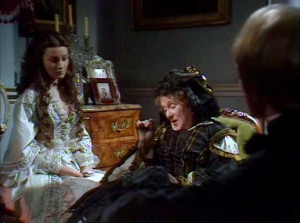
As for the hairstyles featured in "OUR MUTUAL FRIEND" . . . I have mixed feelings about them. I have no idea who the hairstylist was, but he or she did managed to come close in re-creating mid-19th century hairstyles. Only those worn by most of the younger female characters seemed to be loose curls or flowing curly hair in the style of those featured in many pre-Raphaelite paintings - especially by Lesley Dunlop and Polly James. Although such hairstyles were popular in mid-19th century art (especially in Britain), I have grave doubts that many women - or many young women between the 1840s and the 1860s wore their hair in such a manner.
Overall, I cannot deny that "OUR MUTUAL FRIEND" was a first-rate adaptation of Charles Dickens' 1864-1865 novel. Yes, I had a few issues that included the miniseries' photography, some writing decisions, a few over-the-top performances and the belief that I felt I was watching a filmed play. But despite these quibbles, "OUR MUTUAL FRIEND" also featured some top-notch performances from a cast led by John McInery and a screenplay by Julia Jones and Donald Churchill that did Dickens' novel proud.

#costume drama#period drama#period dramas#charles dickens#our mutual friend#our mutual friend 1976#victorian age#john mcinery#jane seymour#lesley dunlop#nicholas jones#warren clarke#leo mckern#polly james#andrew ray#ronald lacey#alfie bass#kathleen harrison#hilda barry#john collin#david troughton#ray mort#patricia lawrence#edmund bennett#peter hammond#john harmon#bbc drama#julia jones#donald churchill
1 note
·
View note
Text
'Lilli Schwenk Hornig was 23 years old when she arrived at Los Alamos to contribute to the development of an atomic bomb that would end World War II. A passionate chemist, Lilli battled sexism throughout her academic and professional careers and remained a steadfast advocate for female scientists like herself.
Lilli Hornig: What I remember in my mind is the—these sort of boiling clouds and color—vivid colors like violet, purple, orange, yellow, red, just everything. And we were all kind of shaken up.
Katie Hafner: That’s the scientist Lilli Hornig, describing what she recalls of the first test of a nuclear bomb on 16 July 1945 in the New Mexico desert.
This is Lost Women of the Manhattan Project, a special series of Lost Women of Science focusing on the female scientists and their contributions to the building of the first atomic bomb.
In this episode, we share the story of a young chemist who experienced Nazism firsthand in Europe before finding herself in the middle of the United States’ war against Hitler, working against time to develop the detonating device that would make the Trinity test possible. After that test, and the bombs themselves that were dropped on Japan, she was shaken, and haunted.
We also want to tell you Lilli Hornig’s story because she's an example of something we keep seeing over and over at Lost Women of Science: female scientists who follow their scientist husbands to new jobs in academe or industry. The Manhattan Project scooped up many of these spouses though it’s impossible to put a number on just how many.
And there’s more about Lilli Hornig: she’s the only female scientist named in Oppenheimer, Christopher Nolan’s blockbuster film. Her cameo appearance isn’t far off the mark. She’s shown as a woman determined to work as a chemist, not a secretary.
In 2011, the year she turned 90, the real Lilli Hornig sat down for an oral history interview with the Atomic Heritage Foundation. The audio you’ll hear from that conversation is a little bit scratchy, and although Hornig is still as sharp as can be, it’s clear that she’s, well, 90.
Producer Mackenzie Tatananni brings us Lilli Hornig’s story.
Mackenzie Tatananni: Lilli Schwenk was born on March 22, 1921, to Jewish parents in a tiny Czech town about 50 miles outside of Prague. Her father was an organic chemist, her mother a pediatrician. Lilli was introduced to science during her formative years, and the interest stuck.
Hornig: My father took me occasionally, very occasionally, on a Sunday to his lab, and I just loved all the glassware, and he gave me some micro-sized glassware for my doll house. So, I always assumed I would be either a chemist or a physician. And I was kind of squeamish at the time, so I went for chemistry.
Tatananni: In 1929, when Lilli was eight years old, she moved with her family to Berlin, where her father began work for a pharmaceutical company. But anti-semitism was on the rise and the Nazis were establishing a stronghold throughout Germany. The danger to the Schwenk family was palpable.
Hornig: After Hitler came to power, my father was actually being threatened with being taken off to a concentration camp.
Tatananni: Fearing for his life, her father fled alone to the United States in 1933. It would be months before Lilli and her mother were able to join him, settling in Montclair, New Jersey.
The U.S. was a daunting new world for Lilli. She barely spoke English. School was the biggest shock of all. Everything was unfamiliar, from the placement tests she took at the start to the creamed carrots she prepared in cooking class.
But she wasn’t deterred. Lilli earned a B.A. in chemistry from Bryn Mawr in 1942 before moving on to a graduate chemistry program at Harvard. Unlike Bryn Mawr, a women’s college, Harvard’s chemistry department was far from inviting for women. For one thing, there was no ladies’ room in the building.
Hornig: I had to go to another building. I had to get a key for it. And that sort of gave me a message.
Tatananni: At a meeting with chemistry faculty, she was told that women always had trouble with physical chemistry. Lilli did NOT want to prove them right. She studied rigorously, poring over the notes of fellow chemist Donald Hornig, a PhD student whom she’d met on her first day and soon began dating. But she flunked the first semester and was forced to retake it, only to ace it the second time around.
In spite of these trials, she earned her master's in chemistry in 1943, the same year she married Don Hornig. Don was already involved in the effort to develop nuclear weapons. His doctoral thesis investigated blast measurement, and he was studying ways to measure blasts in midair.
In 1944, Don was approached by his thesis advisor, Bright Wilson, with a job offer. But he wouldn’t elaborate on just what the job would be.
Hornig: Bright said, “Well I can’t tell you much about it.”
And Don said, “Well tell me where it is.”
And he said, “No I can’t tell you.”
“Well, can you at least tell me, is it north, south, west?”
“No, couldn’t tell you.”
Tatananni: Don relayed what little information he had to Lilli. The job offer was shrouded in so much mystery that they jointly decided that Don would turn it down. However, Don continued to face pressure, particularly from George Kistiakowsky, a physical chemist who had gone to Los Alamos to develop explosives. Kistiakowsky called Don and told him he needed him badly.
Hornig: And with a few curses, which was very much his style—he said, “Dammit, you come out here.”
Tatananni: Kistiakowsky managed to talk Don into taking the job. But–
Hornig: I said, “What am I going to do there?”
And so Don talked to George some more, and after that George said, “Oh we’re scouring the country for anybody with a Master’s in chemistry, especially from Harvard, is going to be more than welcome.”
Tatananni: She was in. They were both 23.
Hornig: You know we were so young. When I look now at our grandchildren, the youngest ones are about the age we were then and they don’t think of themselves as having adult responsibilities. It’s very striking to me because we had no doubt that we were grown up.
That spring, the couple sold their Massachusetts home and their sailboat, bought a 1937 Ford Coupe and drove to Los Alamos, New Mexico.
When they arrived…Don went straight to work…
Hornig: And I went to the personnel office. And the first question was, “How fast can you type?” And I said, “I don’t type.”
Tatananni: We see a version of this scene in the film Oppenheimer. The character Lilli Hornig catches up with Oppenheimer as he’s walking with a group of men.
[Start clip from the film Oppenheimer]
Hornig: Dr. Oppenheimer, I tried personnel. They asked if I could type.
J. Robert Oppenheimer: Can you?
Hornig: Harvard forgot to teach that on the graduate chemistry course.
[End clip from the film Oppenheimer]
Tatananni: Oppenheimer turns to one of his scientists and says, "Put Mrs. Hornig on the plutonium team.
She started with the plutonium group as soon as her security clearance came through, and she quickly found that her new life was…lonely.
Ellen McGehee: She did not have children. She was even more isolated from her, sort of female peers, because she kind of worked within her own group and socialized with her husband's friends and those couples.
Tatananni: That’s Ellen McGehee, a lab historian at the Los Alamos National Laboratory who has researched the life of Lilli Hornig.
McGehee: I sense that she had almost a, she had a pretty compartmentalized scientific experience. Even though she knew what the goal was.
Tatananni: Here’s how Lilli saw it:
Hornig: There was one other woman in the division, she and I worked together, and we had our little cubby hole and did our little procedures and put them under the geiger counter. And nobody actually really spoke to us.
Tatananni: Plutonium chemistry was a mystery at the time, as almost none of the artificial element had been created. Lilli’s group was working on studying plutonium-239, the isotope that was believed to be a powerful fuel for the atomic bomb. However, in the summer of 1944, there was a disappointing discovery. It turned out that using plutonium in a bomb would be harder than expected. Los Alamos scientists found that plutonium created in a nuclear reactor contained traces of the isotope plutonium-240, which is formed when plutonium-239 absorbs another neutron while still inside the reactor. Plutonium-240 had an extremely high rate of spontaneous fission, and could not be removed from the valuable plutonium-239. While uranium could be used in a very simple bomb design, a plutonium bomb made that way would prematurely detonate, destroying itself before its reaction got large-enough to be a viable weapon.
So the Los Alamos scientists had to pivot. And quickly.
At that time, most of the work at Los Alamos had been focused on a simple bomb design called the gun-type, in which one piece of fissile material was shot into another through a gun tube. The plutonium gun design, called Thin Man, was discontinued when it was discovered that it would pre-detonate. The scientists understood that to use plutonium in an atomic bomb, they would need to do something different.
They decided to focus on implosion, a much faster method of assembly. A sphere of plutonium would be surrounded by tons of specially-designed high explosives, detonated at exactly the same moment and potentially leading to a powerful and efficient explosion. But nothing like implosion had ever been done before. The entire organization of Los Alamos was shifted in the summer of 1944 to tackle and solve the implosion problem.
When that happened, both Lilli and the other woman were taken off work that directly involved plutonium. The men in charge were concerned that radioactive materials would affect fertility. This scene also appears in the Oppenheimer movie, but don’t blink or you’ll miss it. In case you did miss it, here’s how Lilli described her reaction to the men's concern for her health:
Hornig: They were worried obviously about reproductive damage. I tried delicately to point out that they might be more susceptible than I was; that didn’t go over well.
Tatananni: Lilli went on to join her husband in the high explosives unit. The need for precision in the explosives and their detonators was unprecedented, and that unit proved crucial to the success of the new plutonium bomb, which was codenamed Fat Man.
Here's Ellen McGehee, the Los Alamos historian, again:
McGehee: They really needed to figure out how implosion was working. And so they had to come up with all these different methods and new technologies that had to be invented on the spot and facilities that actually had to be built.
Tatananni: Lilli’s group worked on the explosive lenses used in Fat Man to focus the implosion shockwave and guarantee that pressure was uniform around the plutonium core. But just two days before the Trinity test, there was a misfire on the spark gap switch, a sensitive electronic device that Don had designed to send an electrical signal to all 32 of the lens detonators within a microsecond.
Hornig: And at two o’clock in the morning our group leader Lewis Fussell was knocking on my bedroom window saying, “You have to get up, we have some work to do.”
Tatananni: So Hornig and Fussell headed to the stock room with a list of equipment they had to replace. In a matter of hours, they located the parts, which were shipped off on a truck that same morning.
Forty eight hours later, Lilli was sitting atop a mountain in the Sandia range with colleagues, 110 miles from the test site, watching and waiting for ignition.
Hornig: We put sleeping bags on the ground. None of us slept very well, so we got up about three o'clock, I guess. And started waiting for the shock, kept keeping our eyes glued on, on the site.
Tatananni: They waited and waited, but nothing happened. They decided the test wasn't happening that day after all, and started to leave.
Hornig: I was sitting in the car reaching for my ignition key—and the thing bloomed in front of us and it was just incredible.
Tatananni: It didn’t take long for Lilli and her colleagues to understand in the most concrete of terms the potential for destruction on an unprecedented scale.
Germany had surrendered two months earlier, in May of 1945, so the war in Europe was over, but it raged on in the Pacific as Japan refused to surrender.
Lilli – and many others working on the Manhattan Project – had been in favor of building a bomb to stop the Nazis, especially if the Germans were working on one as well. But once Germany surrendered, and …
Hornig: Once the European war was over with, well, a lot of people left right away.
Tatananni: There was now a question about whether it was really necessary to drop the bomb on Japan.
Leo Szilard, a physicist working with Enrico Fermi’s group in Chicago, circulated a petition among the scientists there that called on President Truman to consider dropping the bomb only if an announcement was made first and Japan still refused to surrender.
Hornig: I remember the petition came around just after the test. Some of my friends were signing it and I thought about it and I thought that was a good idea.
We thought in our innocence that if we petitioned hard enough, they might do a demonstration test, and invite the Japanese to witness it. But of course the military I think had made the decision well before that they were going to use it no matter what. And so we had very mixed feelings about that.
Tatananni: In the end, Lilli wasn’t one of the 70 scientists who signed the petition - although she appears in the movie, speaking out against the dropping of the bomb. And she wasn’t at Los Alamos when the Americans dropped the first atomic bomb on Japan. She was in Milwaukee, visiting her in-laws.
Hornig: We knew the drop was imminent. We didn’t know the precise moment. Certainly Don’s parents didn’t have TV at the time and I don’t know if there were ever any news on, but Don and I went downtown. There were all the papers with the headlines, so we knew it had gone off.
That was an odd mix of feelings. I mean, certainly some triumph and the destruction was just so incredible. I think we’ve all been a little haunted by that over the years.
Tatananni: Shortly afterwards, Lilli fell ill with hepatitis and couldn’t return to Los Alamos. So she returned to her studies. Again she followed her husband, this time to Brown University, where she was offered lab space, all while commuting to Harvard to attend lectures.
In 1947, when Brown found itself short on chemistry faculty, Lilli stepped up to teach.
Hornig: And it was very hard to hire faculty then because there were so many guys coming back, making huge classes, and you know with that many men graduating or getting their graduate degrees during the war. Here I was with a brand new baby, with a Master’s Degree, teaching 250 guys, and I think there were six girls in the first class.
Tatananni: Lilli received her doctorate in chemistry from Harvard in 1950, and no, typing wasn’t taught in the doctoral program there, either. She continued teaching at Brown and later at Trinity College as chair of the chemistry department.
She became an outspoken champion of women in science, paying forward the hard-won role she played during a pivotal time in U.S. history. It’s hard to say what Lilli would have thought of the film in which she appears as the only female scientist. Chances are she’d have been amused, perhaps even honored. Then again, she might have been pissed off on behalf of all the women who were left out, not just of that movie, but left out of a history rich with the stories of hundreds of female scientists like her.
Tatananni: Lilli Hornig died in Rhode Island in 2017 at the age of 96.
Hafner: This has been Lost Women of the Manhattan Project. Mackenzie Tatananni produced this episode with help from Deborah Unger and from me, Katie Hafner...
Thanks, too, to Alex Wellerstein, John Townsend, the physics department of Harvey Mudd College and the American Institute of Physics for helping us get the science straight.
Those excerpts you heard from the Lilli Hornig interview were used with permission from the Atomic Heritage Foundation and the National Museum of Nuclear Science & History.
Lost Women of Science is funded in part by the Alfred P. Sloan Foundation and Schmidt Futures. We’re distributed by PRX and produced in partnership with Scientific American.
For more about Lost Women of Science, please visit us at lostwomenofscience.org...
Hafner: A special shout-out to the folks at Los Alamos National Laboratory for helping us tell the stories of the women who worked on the Manhattan Project.
We can’t tell you all their stories, but we can tell you many of their names, which we’ve been reading aloud for you on and off through this series. Here are a few more….
Speaker: Pat Patterson.
Speaker: Hazel Genzel.
Speaker: Ida Cunningham.
Speaker: Joan Clark.
Speaker: Amanda Bloom.
Speaker: Kathleen Gavin.
Speaker: Mary Rose Ford.
Speaker: Gladys Morgan Hopper.
Speaker: Creola Green McCamey
Speaker: Patricia Lear.
Speaker: Doris Dixon.
Speaker: Sonia Katz...'
#Joan Clark#Amanda Bloom#Kathleen Gavin#Mary Rose Ford#Gladys Morgan Hopper#Creola Green McCamey#Patricia Lear#Doris Dixon#Sonia Katz#The Manhattan Project#Los Alamos#Pat Patterson#Hazel Genzel#Ida Cunningham#Lilli Hornig#Christopher Nolan#Harvard#George Kistiakowsky#Ellen McGehee#Enrico Fermi#Leo Szilard
0 notes
Text

"Dad, listen, I may have found someone."

...
"Why would it matter if it was Sophie Clarke?"
...
"Well, she's not Sophie so you can stop right there. Her name is Kathleen Rose."
...
"I'm not sure, but she fits the build you're looking for."
...
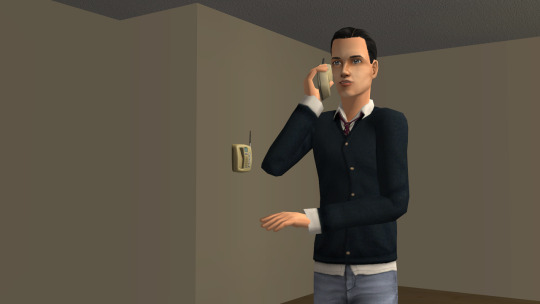
"That's out of the question, we only started dating--"
...
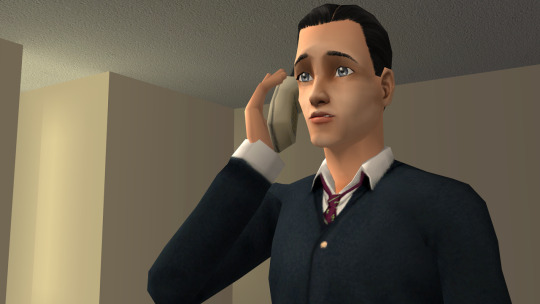
"Oh--well, is she--"
...
"How much time do we have then?"
...
"Okay, I'll figure something out. Kathy and I will visit as soon as possible. Tell granddad I'll be there soon."
#the beginning#reginald iii barber#reginald ii barber#kathleen rose#sophie clarke#year 3#sims 2#ts2#storytelling#rbu#reginald barber university#barber brothers fraternity
2 notes
·
View notes